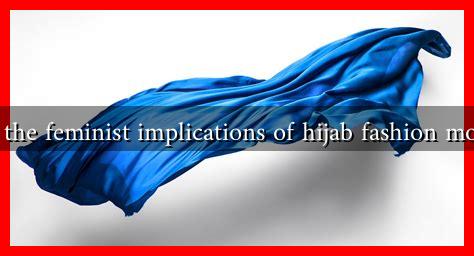-
Table of Contents
What are the Feminist Implications of Hijab Fashion Movements?
The hijab, a traditional headscarf worn by many Muslim women, has evolved from a symbol of oppression to a powerful statement of identity and empowerment in contemporary fashion. The emergence of hijab fashion movements has sparked discussions about feminism, autonomy, and cultural representation. This article explores the feminist implications of these movements, highlighting their impact on women’s rights, self-expression, and societal perceptions.
The Evolution of Hijab in Fashion
Historically, the hijab has been viewed through a lens of oppression, often associated with patriarchal control over women’s bodies. However, recent trends in hijab fashion have redefined its meaning. The rise of social media platforms has allowed Muslim women to showcase their styles, creating a vibrant community that celebrates diversity and individuality.
- Social Media Influence: Platforms like Instagram and TikTok have given rise to influencers who promote hijab fashion, challenging stereotypes and encouraging self-expression.
- Fashion Industry Engagement: Major fashion brands are increasingly incorporating hijab styles into their collections, recognizing the market potential and the demand for inclusive fashion.
- Global Representation: Hijab fashion movements have gained international attention, showcasing the beauty and versatility of hijab-wearing women from various cultures.
Feminism and Autonomy
One of the most significant feminist implications of hijab fashion movements is the emphasis on women’s autonomy. The choice to wear a hijab is deeply personal and can be an expression of faith, identity, or personal style. This autonomy challenges the notion that women who wear hijabs are oppressed or lack agency.
- Empowerment through Choice: Many women assert that wearing a hijab is a conscious choice that empowers them, allowing them to reclaim their bodies and identities.
- Redefining Feminism: The hijab fashion movement encourages a broader understanding of feminism that includes diverse experiences and choices, moving away from a Western-centric narrative.
- Intersectionality: The movement highlights the importance of intersectionality in feminism, recognizing that women’s experiences are shaped by various factors, including culture, religion, and socio-economic status.
Challenging Stereotypes and Misconceptions
Hijab fashion movements play a crucial role in challenging stereotypes and misconceptions about Muslim women. By showcasing their fashion choices, these women confront the media’s often negative portrayal of hijab-wearers.
- Media Representation: Positive representation in fashion media helps to dismantle harmful stereotypes, portraying hijab-wearing women as fashionable, confident, and empowered.
- Community Building: The hijab fashion movement fosters a sense of community among women, providing a platform for sharing experiences and supporting one another.
- Global Solidarity: The movement encourages solidarity among women of different backgrounds, promoting a shared understanding of empowerment and self-expression.
Case Studies and Examples
Several case studies illustrate the feminist implications of hijab fashion movements:
- Huda Kattan: The beauty influencer and entrepreneur has used her platform to promote hijab fashion, inspiring millions of women to embrace their identities.
- Modanisa: This Turkish online retailer specializes in modest fashion, showcasing a wide range of hijab styles and promoting inclusivity in the fashion industry.
- Fashion Weeks: Events like New York Fashion Week have featured hijab-wearing models, signaling a shift towards inclusivity in mainstream fashion.
Conclusion
The feminist implications of hijab fashion movements are profound and multifaceted. By promoting autonomy, challenging stereotypes, and fostering community, these movements empower women to express their identities on their terms. As the fashion industry continues to evolve, it is essential to recognize and celebrate the diverse experiences of hijab-wearing women, ensuring that their voices are heard and valued. Ultimately, the hijab fashion movement serves as a powerful reminder that feminism is not a monolith; it is a tapestry woven from the unique stories and choices of women around the world.
For further reading on the intersection of fashion and feminism, consider exploring resources from organizations like Feminist Fashion.

